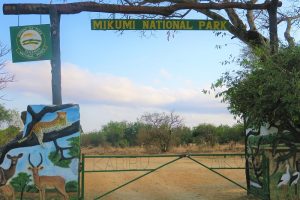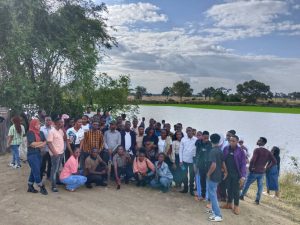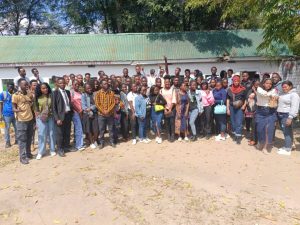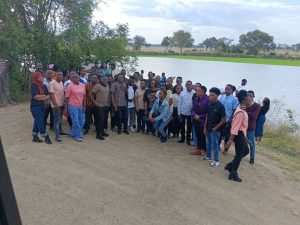Students from BSc. Range Management from the Department of Animal, Aquaculture, and Range Sciences made a tour at Mikumi National Park
The second-year students from BSc. Range Management, made a study tour on the 22nd of June 2024 at Mikumi National Park to appreciate the existing biodiversity and evaluate the impact of human settlement on the ecological fragmentation of wildlife habitat. Mikumi National Park, located in Morogoro, Tanzania, is renowned for its rich biodiversity, encompassing a wide variety of flora and fauna. However, the increasing human settlement around the park poses a significant threat to its ecological integrity. This study tour aims to evaluate the biodiversity within Mikumi National Park and examine the impact of human settlements on the fragmentation of wildlife habitats.
Mikumi National Park hosts a diverse range of ecosystems, including savannas, grasslands, and forests, which support an array of wildlife species. The park is home to large mammals such as elephants, lions, giraffes, zebras, and buffaloes. Additionally, it harbors numerous bird species, reptiles, amphibians, and insects, making it a biodiversity hotspot. The unique vegetation types in the park also contribute to its ecological richness, providing habitat and food resources for various species.

Over recent decades, the expansion of human settlements near Mikumi National Park has led to significant ecological fragmentation. Agriculture, livestock grazing, and infrastructure development have encroached on wildlife habitats, leading to habitat loss and degradation. These activities disrupt migration corridors, reduce habitat connectivity, and create isolated patches of natural environments, which are detrimental to the survival of many species.
Habitat fragmentation has several adverse effects on wildlife. It restricts the movement of animals, limiting their access to food, water, and mates, which is essential for their survival and reproduction. Fragmented habitats also increase human-wildlife conflicts, as animals venture into farmlands and settlements in search of resources, leading to crop damage and livestock predation. Furthermore, isolated wildlife populations face genetic bottlenecks, increasing their vulnerability to diseases and reducing their adaptive potential to environmental changes.

Efforts to mitigate the impact of human settlement on Mikumi National Park’s biodiversity involve integrated conservation strategies. These include creating buffer zones around the park, promoting sustainable agricultural practices, and engaging local communities in conservation initiatives. Additionally, enhancing habitat connectivity through wildlife corridors can help maintain genetic flow and reduce the negative impacts of fragmentation.
Mikumi National Park’s biodiversity is under threat due to the encroachment of human settlements, leading to ecological fragmentation. Effective conservation measures are crucial to preserving the park’s ecological integrity and ensuring the long-term survival of its diverse species. Collaborative efforts between conservationists, local communities, and government authorities are essential to achieve sustainable coexistence and protect the natural heritage of Mikumi National Park. The students were guided and supervised by three technical staff, Mr. Mohamed Toure, Mr. Gerald Mlowe, and Mr. Valentine Kimario all from the Department of Animal, Aquaculture, and Range Sciences. The students also visited the Mikumi Snake Park and other game farms to study non-conventional animal management.



The Department of Animal, Aquaculture, and Range Sciences
The College of Agriculture, Sokoine University of Agriculture
Share this page




